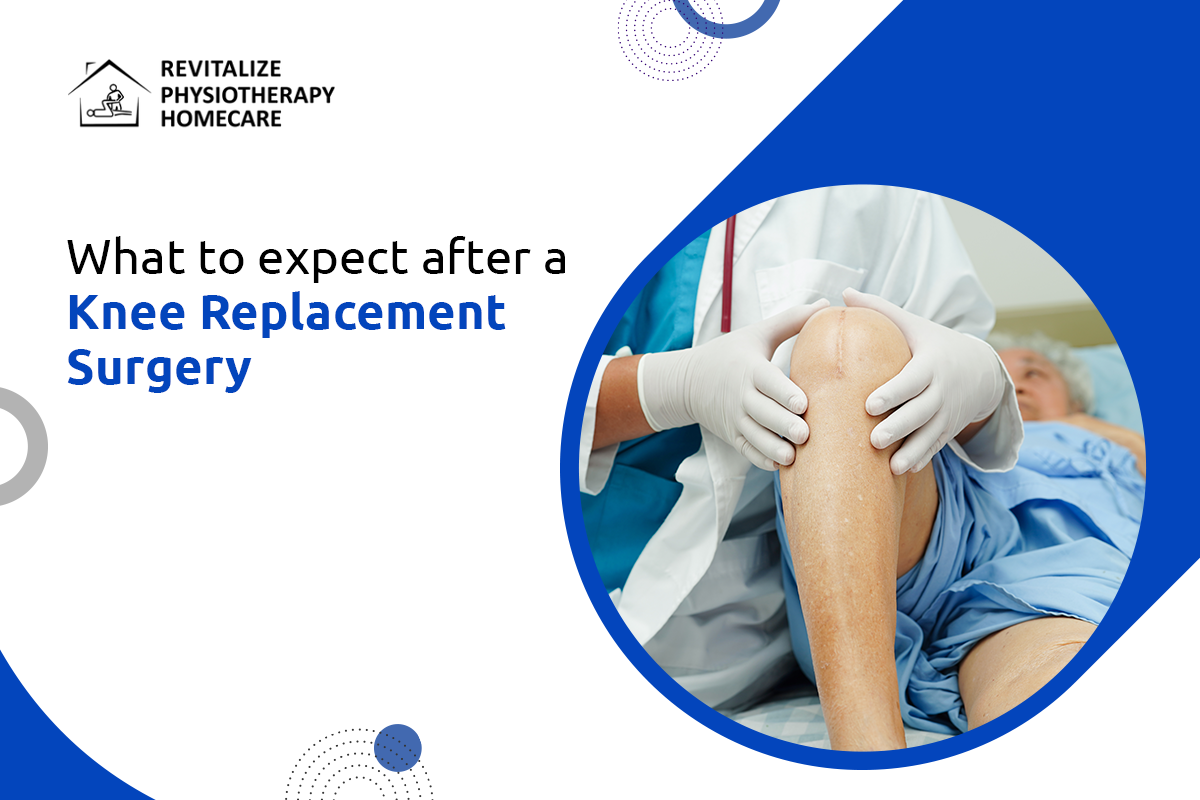What to expect after a Knee Replacement Surgery
Along with experience, aging comes with numerous bone discomforts. Bone is one of the most vital regions that impacts the growing old beauties. With advancing age, energy has a tendency to lower and joints lose their mobility.
Knee joints are one of the most affected joints which impacts nearly each growing old person's quality of life. Knee pain because of osteoarthritis is a very annoying concern that human beings undergo.
When all clinical treatments have stopped bringing you relief, it is quite obvious to jump into surgeries. In some cases, consulting a healthcare practitioner or approaching Knee Replacement Physiotherapy Brampton can be much more helpful.
What Is Knee Replacement Surgery?
Knee replacement surgery is known as arthroplasty of knee. It is a surgical procedure in which a damaged or worn-out knee joint is replaced with an artificial joint made of metal, plastic, or ceramic materials.
The surgery is performed on patients with severe knee pain and disability caused by conditions such as osteoarthritis, rheumatoid arthritis, or injury. During the surgery, the damaged or diseased parts of the knee joint are removed, and the artificial joint is implanted in their place. The surgery can be done as a partial knee replacement or a total knee replacement.
Partial knee replacement involves replacing only one part of the knee joint, while total knee replacement involves replacing the entire knee joint. The decision to perform a partial or total knee replacement depends on the severity and location of the damage in the knee joint.
After the surgery, patients typically undergo a period of rehabilitation or Knee Replacement Physiotherapy Brampton to regain strength and mobility in their knee joint. The goal of knee replacement surgery is to reduce pain and improve function, allowing patients to resume their normal activities and improve their quality of life.
When is knee replacement surgery required?
Knee replacement surgery may be necessary when a person experiences chronic knee pain and disability. Surgery is required for the one who cannot lessen their pain through non-surgical treatments such as medications, physical therapy, and lifestyle modifications.
Common reasons for knee replacement surgery includes:
1. Osteoarthritis:
This is a degenerative joint disease that occurs when the cartilage that cushions the bones in the knee joint wears away, causing pain, stiffness, and difficulty walking or standing.
2. Rheumatoid arthritis:
This is an autoimmune disease that causes chronic inflammation and damage to the joints, including the knee joint.
3. Trauma or injury:
A severe injury to the knee joint, such as a fracture or ligament tear, may require knee replacement surgery to restore function.
4. Other conditions:
Knee replacement surgery may also be recommended for people with other conditions that cause knee pain and damage, such as avascular necrosis, tumors, or deformities.
In general, knee replacement surgery is considered when the pain and disability from knee conditions are severe enough to impact a person's daily activities and quality of life. It is important to discuss the risks and benefits of knee replacement surgery with a healthcare provider to determine if it is the right option for your condition!
How long does it take to get over knee replacement surgery?
The recovery time after knee replacement surgery varies from person to person and depends on several factors such as:
the extent of the surgery,
the person's age,
overall health,
and presence of underlying medical disorders.
However, in general, it takes several weeks or months to fully recover from knee replacement surgery.
It is crucial to obey all the post-operative instructions that is provided to you by a professional. It is also advised to attend all scheduled follow-up appointments to monitor progress and ensure a successful recovery.
Timeline of getting back to “Normal” after Knee Replacement Surgery:
After knee replacement surgery, it is normal to experience some pain, swelling, and stiffness in the affected knee. Let us now quickly have a look at the timeline after knee replacement surgery:
One Hour After Surgery
After one hour following knee replacement surgery, the person will typically still be in the recovery room or the post-anesthesia care unit (PACU).
During this time, the healthcare team will monitor the person's vital signs, including heart rate, blood pressure, and oxygen saturation, to ensure they are stable and recovering well from anesthesia.
The person will also be given pain medication to manage any pain or discomfort after surgery. They may have a nerve block or epidural catheter in place to provide continuous pain relief in the affected leg.
The healthcare team will assess the person's ability to move their toes and ankle, as well as the sensation in their leg.
Overall, the first few hours after knee replacement surgery are focused on monitoring the person's vital signs, managing pain, and starting rehabilitation exercises. The healthcare team will closely monitor the person's progress and adjust their physio plan as needed to ensure a safe and successful recovery.
One Week After Surgery
After one week following knee replacement surgery, the person will by that have returned home from the hospital or the rehabilitation center. At this point, they will still be in the early stages of recovery. They may experience some discomfort, but pain and swelling should start to decrease. The person will need to continue to take care of the surgical incision by keeping it clean and dry. You can avail of mobile physiotherapy service and get a customized plan with specific instructions on how to care for the incision and when to change the dressing.
In-home physiotherapy will be ongoing, with exercises to improve range of motion, strength, and mobility. A Brampton Physiotherapist may also provide instructions on how to use assistive devices, such as crutches or a walker. The therapist will schedule follow-up appointments to check progress. It is important to follow the healthcare provider's instructions to ensure a safe and successful recovery.
One Month After Surgery
After one month following knee replacement surgery, the person will have made significant progress in their recovery. Pain and swelling should have decreased, and the person may be able to stop taking pain medication. The wound will heal and the healthcare provider will likely remove any remaining sutures or staples. Knee Replacement Physiotherapy will still be ongoing, with exercises to further improve range of motion, strength, and mobility in the knee joint.
The person may also begin to incorporate more functional activities into their rehabilitation program, such as walking up and down stairs or returning to work. Assistive devices, such as crutches or a walker, may no longer be needed, and the person may be able to walk with minimal or no assistance.
Three Months After Surgery
After three months following knee replacement surgery, pain and swelling should be minimal. The person may be able to stop taking pain medication altogether. Rehabilitation will still be ongoing. But the frequency of appointments may decrease as the person becomes more independent with their exercises.
The person should continue to work on improving range of motion, strength, and mobility of the knee joint. They will be able to begin incorporating more vigorous exercises, such as cycling or swimming, into their routine. At this point, the person will be able to perform most activities of daily living without help. And may be able to return to work or other normal activities, depending on their job.
One Year After Surgery
After one year following knee replacement surgery, the knee joint will be stable. The person will have a good range of motion and mobility. Rehabilitation may no longer be needed at this point. But the person may still continue physiotherapy at home. This will help in retaining their knee strength and flexibility.
It is important to maintain a healthy weight and lifestyle to reduce the risk of complications and ensure the longevity of the knee. But, some high-impact activities or sports may discourage the risk of joint damage or implant wear. After one year of knee replacement surgery, the person will be able to enjoy a good quality of life, with reduced pain and improved mobility.
Final takeaways:
We hope this blog helps you understand more about what to expect after you go through knee replacement surgery.
At Revitalize Physiotherapy and Homecare, we are geared up to help you recover from all your health concerns.
For the best Knee Pain Treatment Brampton, book an appointment with us right away!




